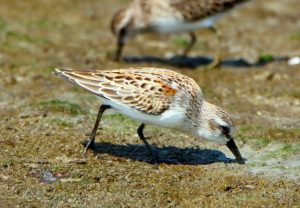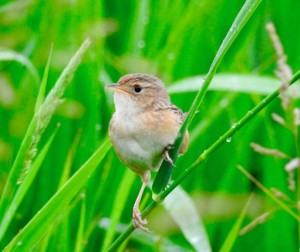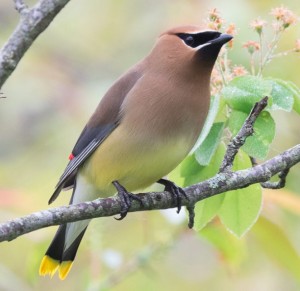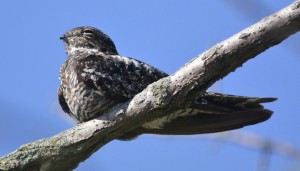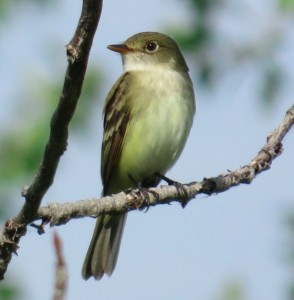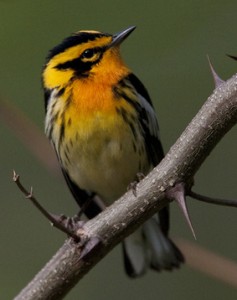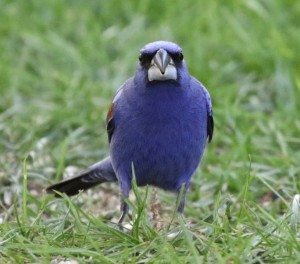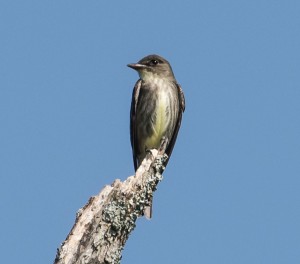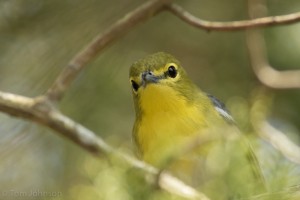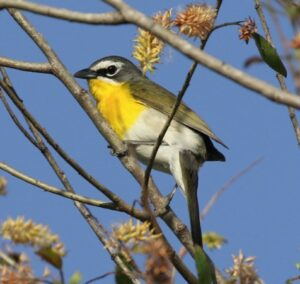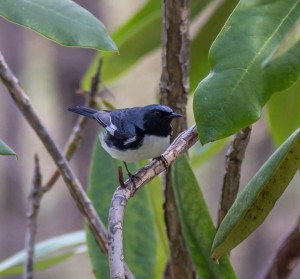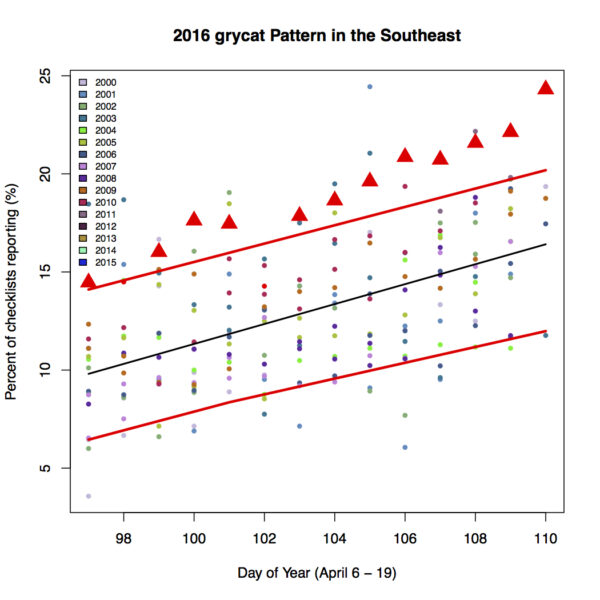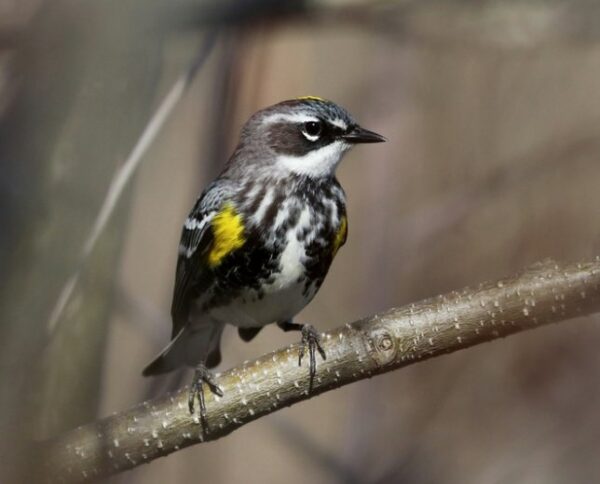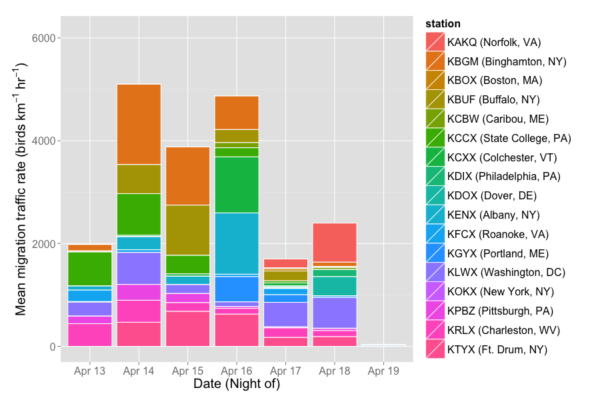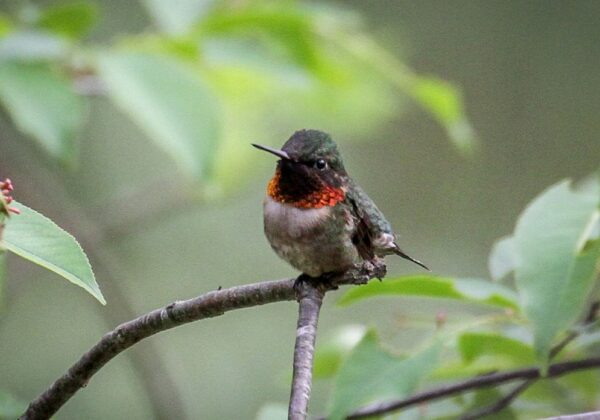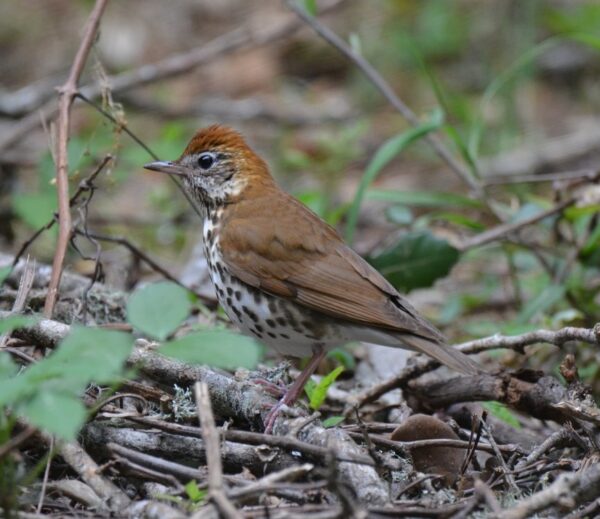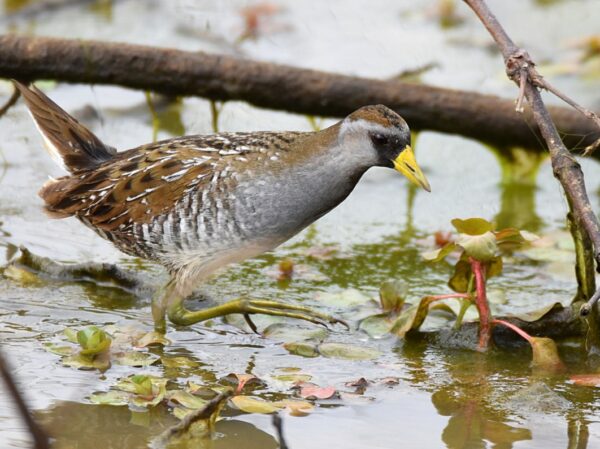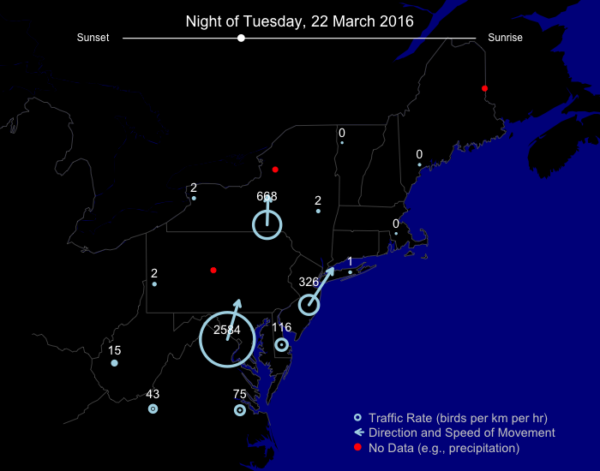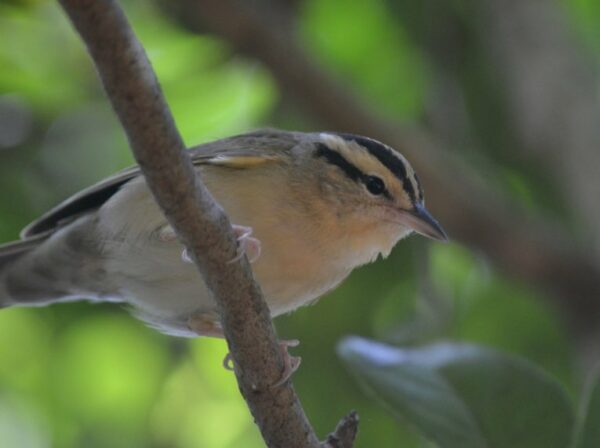News
Locally favorable migration conditions increase in extent over the course of the work week in the East and feature Common Nighthawk, Ruby-throated Hummingbird, Olive-sided Flycatcher, Eastern Wood-Pewee, Great Crested Flycatcher, Prothonotary Warbler, and Northern Waterthrush, while conditions in the west remain largely marginal for migration, with locally favorable patches featuring movements of Greater Yellowlegs, Western Sandpiper, Red-necked Phalarope, Warbling Vireo, Yellow Warbler, MacGillivray's Warbler, and Western Tanager. Read more...
As spring migration winds down, light flights featuring late shorebirds, Eastern Kingbird, Cedar Waxwing, and Grasshopper Sparrow continue in the West early and late in the period primarily in montane areas, while the last vestiges of moderate to locally heavy flights featuring late shorebirds, Yellow-billed Cuckoo, Cedar Waxwing, Sedge Wren, and Henslow's Sparrow grace the East during the second half of the forecast period. Read more...
As the peak of migration in most areas recedes with another spring season passing, portions of the West experience light to moderate flights featuring White-throated Swift, Western Wood-Pewee, Warbling Vireo, Swanson's Thrush, Cedar Waxwing, and Gray Catbird primarily mid and late period and patchily distributed moderate to heavy flights featuring Yellow-billed Cuckoo, Eastern Kingbird, Eastern Wood-Pewee, Cedar Waxwing, Orchard Oriole, and Bobolink occur in the East against a backdrop of a dynamic weather scene. Read more...
A period of generally favorable migration conditions featuring light to moderate flights of Common Nighthawk, Broad-tailed Hummingbird, Willow Flycatcher, Common Yellowthroat, Grasshopper Sparrow, and Western Tanager is in store for much of the West, particularly in the Rockies, while an unfavorable cool and wet start to the East gives way to later week moderate to heavy flights of White-rumped Sandpiper, Dunlin, Red-necked Phalarope, Black Tern, Black-billed Cuckoo, Red-eyed Vireo, Mourning Warbler, and Scarlet Tanager. Read more...
Light to moderate flights graced many areas from California east through the Rockies and featured Black Tern, Willow Flycatcher, Cordilleran Flycatcher, Gray Catbird, and Bobolink, while pulses of moderate and heavy flights featuring White-rumped Sandpiper, Common Nighthawk, Black-billed Cuckoo, Alder Flycatcher, Bay-breasted Warbler, and Canada Warbler were scattered across the East. Read more...
IMPORTANT NOTE: Team Birdcast is focusing on preparing for tomorrow’s Global Big Day, and as a result we haven’t been able to write a thorough forecast and analysis by our usual Friday deadline. Here is an abbreviated forecast, with weather maps and species lists; the analysis for the past week and potentially a supplemental forecast […] Read more...
Migration conditions will be generally more favorable across southern half of the West this week where moderate flights will feature Wilson's Phalarope, Red-necked Phalarope, Black Tern, Willow Flycatcher, Yellow Warbler, MacGillivray's Warbler, and Green-tailed Towhee, while midweek in the East will see the most extensive moderate to heavy flights of Black-crowned Night-Heron, Semipalmated Plover, Short-billed Dowitcher, Black Skimmer, Common Nighthawk, Black-billed Cuckoo, Acadian Flycatcher, Eastern Wood-Pewee, Canada Warbler, Blackpoll Warbler, and American Redstart in a pulse of significantly warmer air. Read more...
Moderate movements, particularly from California east through the central and southern Rockies, featured Black Tern, Cordilleran Flycatcher, Plumbeous Vireo, Swainson's Thrush, Black-headed Grosbeak, and Western Tanager and highlighted the period in the West, while moderate to heavy flights, particularly in the central and southern US, featured Common Nighthawk, Yellow-bellied Flycatcher, Least Flycatcher, Philadelphia Vireo, Veery, Magnolia Warbler, and American Redstart and highlighted the period in the East. Read more...
When birders in Cape May awoke on Monday morning, an interesting pattern was emerging (interesting is the norm in Cape May!). Numerous observers reported that numbers of migrants had arrived during and after the night and were still coming ashore from the Atlantic Ocean. The first real pulse of arrivals of this spring for a number of species had clearly occurred in Cape May. The combination of on the ground reports from eBird, nightly northeastern US radar data processing with BirdCast algorithms, and the excitement of spring arrivals inspired Team BirdCast to look a bit more closely at the events leading up to this movement. Read more...
Welcome to this installment of BirdCast Traffic Reports, posts describing northeastern US nocturnal bird migration traffic rates, as calculated from a completely automated pipeline of algorithms. The images you see in Traffic Reports present the migration traffic rate (MTR), direction of bird movement, and speed of bird movement. See our first report or scientific paper (currently a preprint) for more information about the […] Read more...
Favorable migration conditions in the latter half of the period for the West will bring extensive light to moderate movements of Spotted Sandpiper, Olive-sided Flycatcher, Dusky Flycatcher, Warbling Vireo, MacGillivray' Warbler, Lark Bunting, Clay-colored Sparrow, and Chipping Sparrow, while a highly variable period for weather in the East will bring similarly variable and patchily distributed moderate to heavy movements featuring Least Sandpiper, Forster's Tern, Olive-sided Flycatcher, Least Flycatcher, Acadian Flycatcher, Wood Thrush, Swainson's Thrush, Golden-winged Warbler, Nashville Warbler, Cape May Warbler, Blackburnian Warbler, and Baltimore Oriole. Read more...
Light to moderate flights, primarily in the Desert Southwest and the eastern Rockies, were the highlights of the week in the West and featured Wilson's Phalarope, Vaux's Swift, Western Wood-Pewee, Hammond's Flycatcher, Brown-crested Flycatcher, Warbling Vireo, Yellow Warbler, Hermit Warbler, Summer Tanager, Western Tanager, and Lark Sparrow, while moderate to heavy flights featuring Mississippi Kite, Willet, Ruby-throated Hummingbird, Western Kingbird, Gray Catbird, Bay-breasted Warbler, Black-throated Blue Warbler, Rose-breasted Grosbeak, Blue Grosbeak, Dickcissel, and Baltimore Oriole were extensive in many areas of the East. Read more...
Team BirdCast has been experimenting with ways to detect changes in bird distributions as they are occurring. With the help of two talented Cornell undergraduates, Alex Wiebe and Benjamin Van Doren, who are leading the charge, we introduce the BirdCast Anomaly Detector. To detect unusual events–such as the beginnings of a Snowy Owl invasion, or […] Read more...
The most favorable migration conditions in the West bring light to moderate movements of Vaux's Swift, Broad-tailed Hummingbird, Western Kingbird, Bank Swallow, Virginia's Warbler, Hermit Warbler, Lazuli Bunting, and Lark Sparrow during the work work, while the East experiences moderate to heavy flights featuring Forster's Tern, Solitary Sandpiper, Least Sandpiper, Yellow-billed Cuckoo, Blue-headed Vireo, Kentucky Warbler, Chestnut-sided Warbler, Magnolia Warbler, American Redstart during a wave of favorable and unfavorable migration conditions associated with the movements of a strong frontal boundary. Read more...
Welcome to this installment of BirdCast Traffic Reports, posts describing northeastern US nocturnal bird migration traffic rates, as calculated from a completely automated pipeline of algorithms. The images you see in Traffic Reports present the migration traffic rate (MTR), direction of bird movement, and speed of bird movement. See our first report or scientific paper (currently a preprint) for more information about the […] Read more...
Light and moderate flights featuring White-faced Ibis, Semipalmated Plover, Olive-sided Flycatcher, Red-faced Warbler, and Western Tanager were frequent in many areas of the West, while the East saw moderate and locally heavy flights featuring Spotted Sandpiper, Chimney Swift, Warbling Vireo, Red-eyed Vireo, Blackpoll Warbler, Cape May Warbler, and Prairie Warbler in the southerly flow ahead of a frontal boundary. Read more...
Increasingly favorable conditions for light to moderate movements will build across the West for the work week, featuring Green Heron, Marbled Godwit, Short-billed Dowitcher, Cassin’s Vireo, Barn Swallow, Gray Flycatcher, and Summer Tanager, while the East experiences moderate to heavy flights of Broad-winged Hawk, Sora, Semipalmated Plover, American Avocet, Barn Swallow, Wood Thrush, Black-and-white Warbler, Prothonotary Warbler, Scarlet Tanager, Rose-breasted Grosbeak, Baltimore Oriole, and Lark Sparrow in the Plains for the first half of the period and similarly intense movements farther east later in the period. Read more...
Scattered moderate movements featuring Swainson's Hawk, Vaux's Swift, Bank Swallow, Yellow-breasted Chat, Summer Tanager, and Western Tanager were the migration highlights for the period in the West, while moderate to locally heavy movements associated with the passage of a strong frontal boundary through the East featured Green Heron, Broad-winged Hawk, Sora, Common Nighthawk, Warbling Vireo, House Wren, Palm Warbler, and Baltimore Oriole. Read more...
Welcome to our first spring 2016 installment of the traffic report describing northeast US nocturnal bird migration traffic rates, as calculated from a completely automated pipeline of algorithms. The images you see in Traffic Reports present the migration traffic rate (MTR), direction of bird movement, and speed of bird movement. See our first report or scientific paper (currently a preprint) for […] Read more...
Warming conditions, occasionally punctuated with scattered precipitation, will generally see light to moderate flights across the West, particularly during the second half of the period, while a cold and quiet start to the weekend in the East will change markedly to begin (and end) the work week with moderate to locally heavy flights. Read more...

